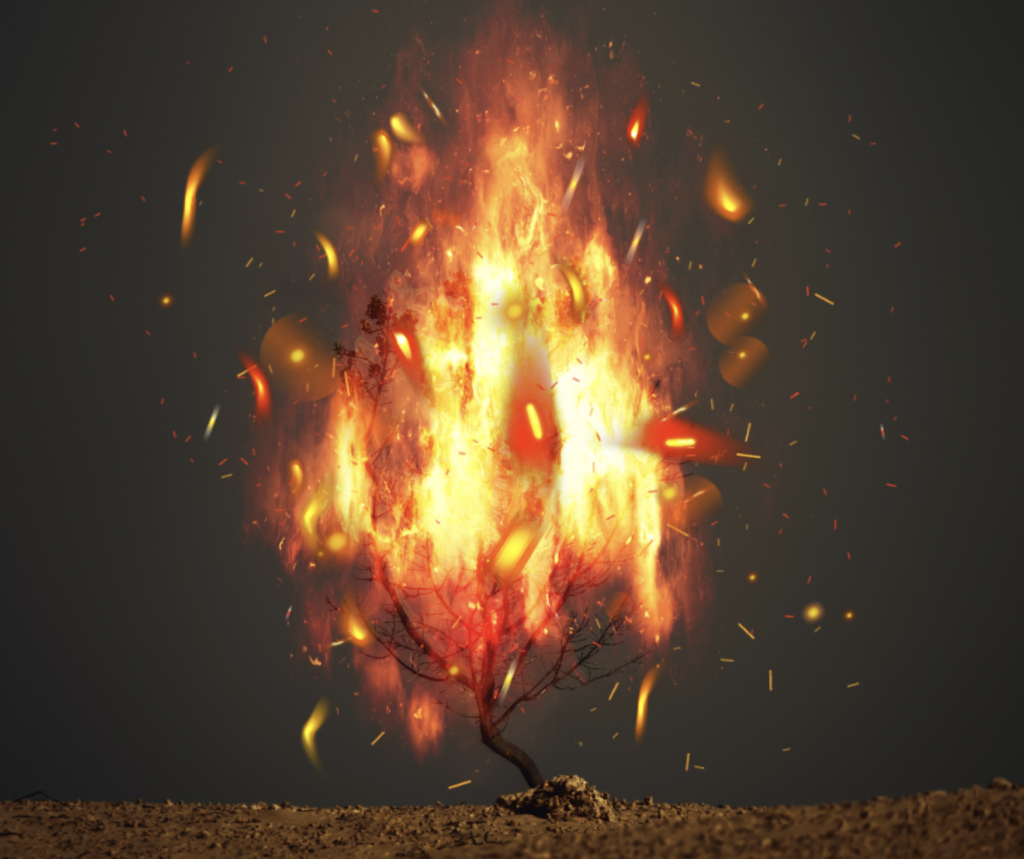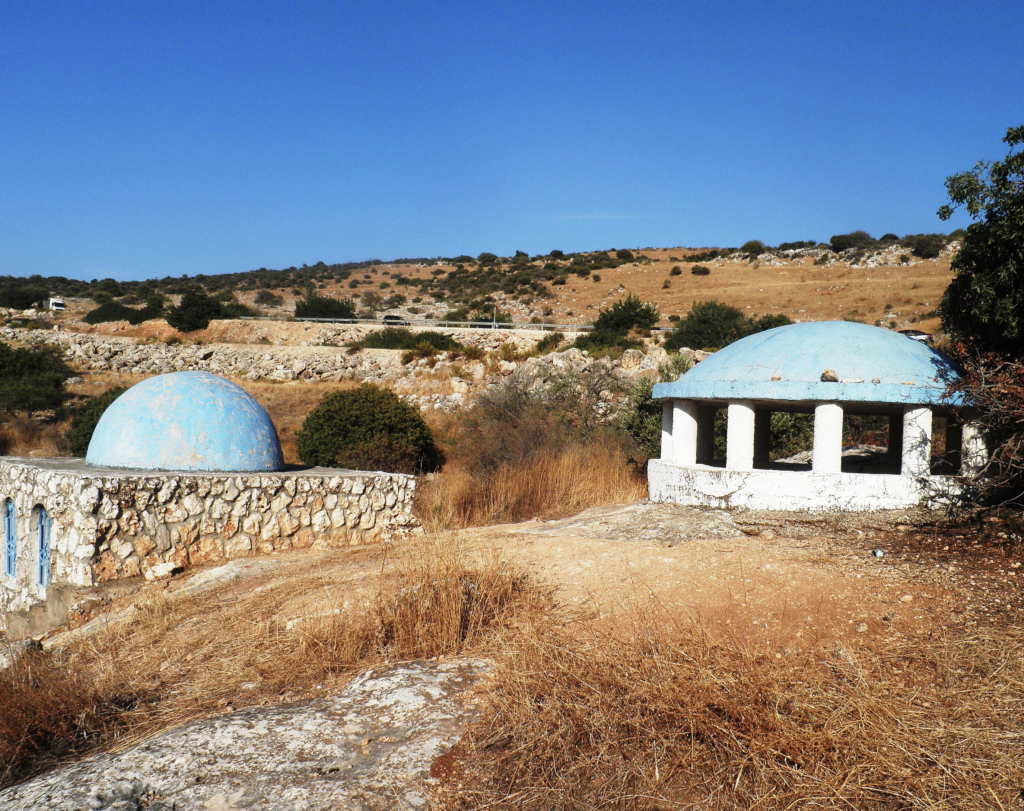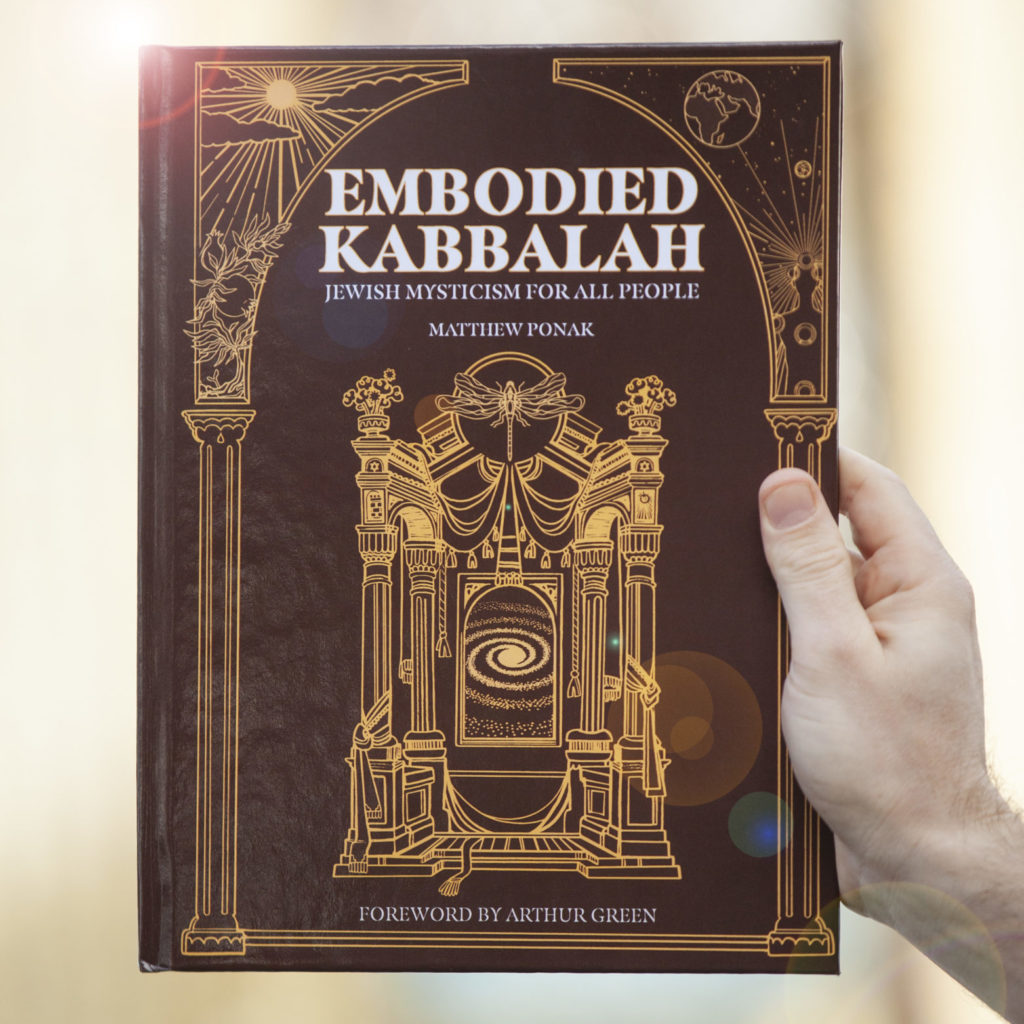The story of Moses and the burning bush1 depicts a powerful encounter with the Divine—a moment of intense spiritual illumination. However, with a close reading of the text we find that, rather than rushing headlong into this experience, Moses hesitates. He approaches the fire cautiously, intrigued but wary of its intensity.

Grounded Spirituality and Jewish Mysticism
According to Rabeinu Baḥya ben Asher ben Ḥlava—13th century kabbalistic commentator—Moses went through three stages, growing more spiritually resilient with each expansive step.
- Moses started off simply being curious about the strange sight of this ever-burning bush.
- Next, he encountered an angel and Moses’ “consciousness was strengthened.”
- Only after this encounter was he ready to hear the voice of God, having connected and then rested between the higher levels of Divine intimacy.
Rabeinu Baḥya teaches that this story holds deep, practical wisdom for inner transformation. He says that just as staring directly at the sun can blind us, diving too quickly into profound spiritual experiences can overwhelm and destabilize us. Instead, the path to mystical connection requires patience, discernment, self awareness and a gradual acclimation to the light.

The burning bush story serves as a model for spiritual growth—a reminder that transcendence is not achieved in a single moment of revelation but through a series of incremental steps.
Rabeinu Baḥya emphasizes the importance of pacing oneself. When we allow for periods rest and rebalancing between ecstatic states, it allows our minds and souls to grow stronger. This cautious path prepares us to receive even more subtle layers of perception and insight.

Sustainable growth requires time, effort, dedication, and wisdom. By embracing the principles of caution and discernment, we can cultivate a truly profound relationship to Existence itself. Through an approach of (1) spiritual expansion and (2) grounded integration we gain resilience which helps us to navigate the complexities of spiritual life (and ordinary life!) with more grace and fortitude.
In a world filled with uncertainty and turmoil, the teachings of Jewish mysticism offer a beacon of hope and a reminder that even in the darkest of times, the light of the Divine shines brightly within us and guides us toward wholeness and healing.

This article is based on teachings from Embodied Kabbalah: Jewish Mysticism for All People by Matthew Ponak. Click here to learn more.
- Exodus chapters 3-4 ↩︎